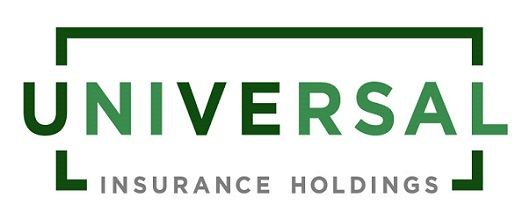Floridian P&C insurer Universal Insurance Holdings saw its combined ratio weaken to 142.9% and 103.9% for the fourth-quarter and full year 2019, respectively, driven by reserve strengthening, adverse weather events, subrogation recoveries, and reduced benefits from claim settlement fees.
 When compared with the fourth-quarter and full year 2018, Universal’s combined ratio deteriorated by 31.7 percentage points and 16.6 percentage points, respectively.
When compared with the fourth-quarter and full year 2018, Universal’s combined ratio deteriorated by 31.7 percentage points and 16.6 percentage points, respectively.
During both periods in 2019, the insurer’s loss and loss adjustment expenses ratio increased, hitting 113.3% in Q4 (79.5% Q418) and 71.6% for the full year 2019 (53.9% FY18). The significantly higher loss ratios for both periods were slightly offset by a lower expense ratio, which totalled 29.6% in Q4 2019 (31.7% Q418) and 32.3% for the full year 2019 (33.4% FY18).
Universal attributes increases in its combined ratios to reduced benefits from claim settlement fees as prior years’ claims concluded, conservatism on prior years’ anticipated subrogation recoveries, current year reserve strengthening, and also weather events above plan.
The insurer explains that prior year reserve development was primarily made up of a $40.7 million reduction in expected subrogation recoveries in Q4 2019, as well as prior accident years adverse development of almost $44 million.
Weather events above plan totalled $16.7 million for the quarter and were directly related to strengthening IBNR for weather events in 2019. For the full year, weather events above plan totalled $38.7 million, compared with $14.8 million a year earlier.
$143.4 million of all other losses and loss adjustment expenses in the quarter were primarily related to diversified growth, reserve strengthening, and a lower benefit from the company’s adjusting business as prior years’ cat claims settle.
Sticking with underwriting, and Universal’s policies in force increased by 7.2% for the year to more than $888 million, with in-force premium growing by 8.7% in the year to roughly $1.3 billion, when compared with 2018. Direct premiums written increased by 12.5% for the quarter and by 8.6% for the full year 2019, while direct premiums earned also increased in both periods, by 8.3% and 9.9%, respectively. Net premiums earned increased by 5.5% in Q4 2019 and by 9.6% for the full year, when compared with the prior year periods.
Overall, Universal has reported an adjusted operating loss of $69.7 million for the fourth-quarter of 2019, compared with adjusted operating income of more than $3.3 million in Q4 2018. For the full year 2019, the company’s adjusted operating income fell by 71% to $55.8 million, against $192.8 million in 2018.
Net investment income of $7.57 million in Q4 2019 represents a decline of 0.3% year-on-year, while for the full year 2019, net investment income spiked by 23.9% to $30.7 million.
Despite the dip in underwriting income and adjusted operating income for both periods, Universal’s total revenue increased by 10.6% in Q4 2019 to $239.4 million, and by 14% for the full year, to $939.4 million.
Stephen Donaghy, Universal’s Chief Executive Officer (CEO), commented: “We ended the year with strong top line growth thanks to our effective marketing strategy, agent relations and customer service.
“Since taking over as CEO in July of 2019, we have continued to respond to the well-documented current Florida dynamics that have affected all industry participants. In spite of these challenges, we produced an annualized return on average equity of 9.2%.
“This annual result includes enhanced conservatism across many different fronts, including the run up of claims prior to the effective date of new AOB legislation, the impact of a hardening reinsurance market, and the overall influence of social inflation. We focused on prior and current years along with our subrogation expectation even though 2019 was our highest subrogation receivable in company history. Our financial strength, along with filing for double digit primary rate increases in Florida and our direct to consumer platform, CloveredSM, have positioned us for long-term, sustainable bottom line growth going forward into 2020 and beyond.
“We believe the diligent work we have put forth, puts us in position to provide FY20 guidance of a GAAP and non-GAAP adjusted EPS range of $2.80 – $3.10 assuming no extraordinary weather events in 2020, and a Return on Average Equity of 17% – 20%.”


